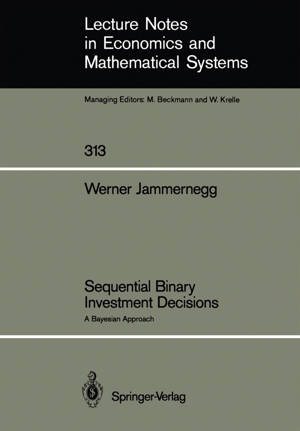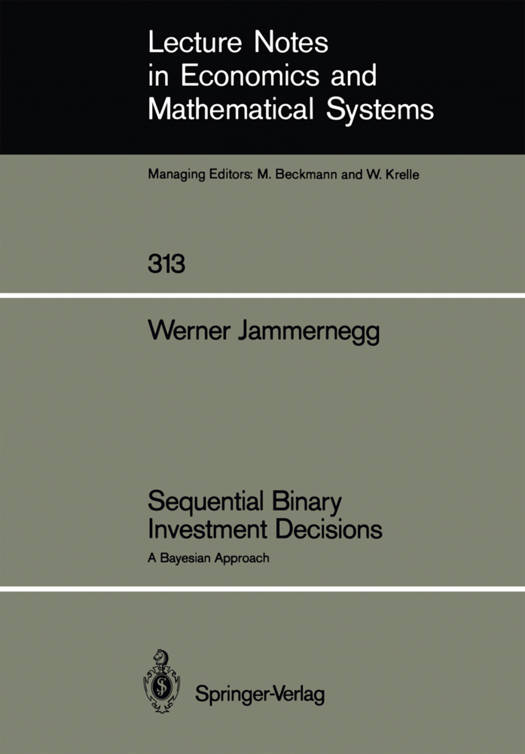
Door een staking bij bpost kan je online bestelling op dit moment iets langer onderweg zijn dan voorzien. Dringend iets nodig? Onze winkels ontvangen jou met open armen!
- Afhalen na 1 uur in een winkel met voorraad
- Gratis thuislevering in België vanaf € 30
- Ruim aanbod met 7 miljoen producten
Door een staking bij bpost kan je online bestelling op dit moment iets langer onderweg zijn dan voorzien. Dringend iets nodig? Onze winkels ontvangen jou met open armen!
- Afhalen na 1 uur in een winkel met voorraad
- Gratis thuislevering in België vanaf € 30
- Ruim aanbod met 7 miljoen producten
Zoeken
Omschrijving
This book describes some models from the theory of investment which are mainly characterized by three features. Firstly, the decision-maker acts in a dynamic environment. Secondly, the distributions of the random variables are only incompletely known at the beginning of the planning process. This is termed as decision-making under conditions of uncer- tainty. Thirdly, in large parts of the work we restrict the analysis to binary decision models. In a binary model, the decision-maker must choose one of two actions. For example, one decision means to undertake the invest- -ment project in a planning period, whereas the other decision prescribes to postpone the project for at least one more period. The analysis of dynamic decision models under conditions of uncertainty is not a very common approach in economics. In this framework the op- timal decisions are only obtained by the extensive use of methods from operations research and from statistics. It is the intention to narrow some of the existing gaps in the fields of investment and portfolio analysis in this respect. This is done by combining techniques that have been devel- oped in investment theory and portfolio selection, in stochastic dynamic programming, and in Bayesian statistics. The latter field indicates the use of Bayes' theorem for the revision of the probability distributions of the random variables over time.
Specificaties
Betrokkenen
- Auteur(s):
- Uitgeverij:
Inhoud
- Aantal bladzijden:
- 156
- Taal:
- Engels
- Reeks:
- Reeksnummer:
- nr. 313
Eigenschappen
- Productcode (EAN):
- 9783540500346
- Verschijningsdatum:
- 27/07/1988
- Uitvoering:
- Paperback
- Formaat:
- Trade paperback (VS)
- Afmetingen:
- 170 mm x 244 mm
- Gewicht:
- 276 g

Alleen bij Standaard Boekhandel
+ 210 punten op je klantenkaart van Standaard Boekhandel
Beoordelingen
We publiceren alleen reviews die voldoen aan de voorwaarden voor reviews. Bekijk onze voorwaarden voor reviews.











